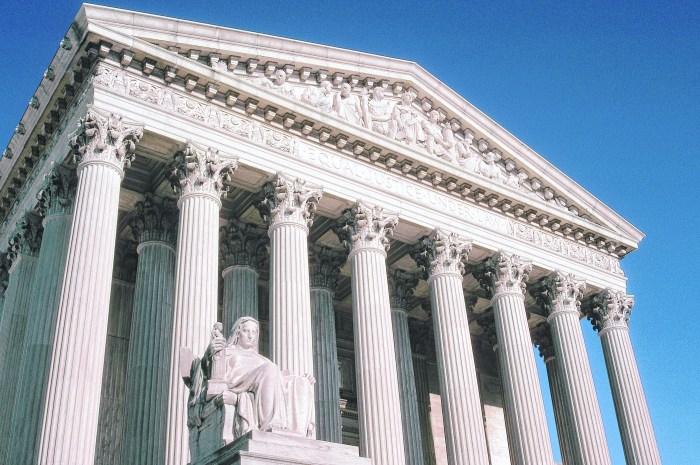Lost amid all the flash flooding news, Gov. Kathy Hochul signed the newest eviction moratorium extension into law early Thursday morning — giving debt-riddled tenants a 4 1/2 month reprieve.
“The pandemic has created unimaginable anxiety for families and business owners who have lost income and are struggling to pay the rent every month,” Hochul said in a Sept. 2 statement. “To help remedy the Supreme Court’s heartless decisions striking down the New York and the Biden administration’s moratoriums on evictions, we are enacting a new moratorium on residential and commercial evictions and extending the protections of New York’s Safe Harbor Act to Jan. 15. These steps will alleviate the crisis facing vulnerable New Yorkers who are suffering through no fault of their own.”
The moratorium, which first began at the height of the COVID-19 pandemic in March 2020, expired on Aug. 31, and Hochul called the State Legislature back into session on Sept. 1 to pass legislation extending the eviction ban once more.
The decision comes as the state government has taken much criticism over its slow distribution of $2.6 billion in federal funds through the COVID-19 Emergency Rental Assistance Program (ERAP). Just $156 million of the proceeds has been allocated since June 1, even though more than 160,000 New York residents have applied for aid.
The governor’s office reported that, as of Aug. 31, more than $1.2 billion in funding “has either been obligated or distributed” through the ERAP program. That includes more than $300 million in direct payments to 23,000 landlords across New York state.
Under the new moratorium extension, Hochul said, ERAP applicants will be automatically protected from eviction while their application is pending; they will receive a year of eviction protections should they qualify for financial aid.
The new moratorium also includes new requirements designed to address legal challenges raised in the Supreme Court’s ruling last month that put an end to the Centers for Disease Control and Prevention’s national eviction ban.
New York tenants must make a hardship declaration in asking to be spared eviction under the moratorium, explaining the source of their current hardship. Landlords will be able to contest such declarations with a court hearing.
Additionally, the moratorium still empowers landlords to seek the removal of tenants who fail to submit the written declaration, damage property, or create conditions that become “safety or health hazards for other tenants.
New York also created a new $250 million Supplemental Emergency Rental Assistance, half of which would be provided to households whose income exceeds 80% of the area median income; and the other half going to landlords whose tenants refuse to participate in the program, or who have vacated the residence while in arrears.
The legislation which extended the eviction ban also places a moratorium on residential foreclosure proceedings homeowners and small landlords with 10 or fewer dwellings; and extended the moratorium on commercial evictions and foreclosures for small businesses with 100 or fewer employees. Those who seek relief under these moratoriums must also demonstrate financial hardship.
Lawmakers supporting the eviction moratorium hailed the decision as a boon for renters and smaller landlords alike.
“We’ve worked hard to ensure that the financial burden on tenants and landlords is lifted, through generously funded, effective relief programs, and to protect small businesses,” said state Senator Brian Kavanagh. “Today, as COVID-19 continues to be a threat to the health and wellbeing of New Yorkers throughout the state, we are taking decisive, comprehensive steps to extend and strengthen the pillars of our legislative strategy to keep all New Yorkers safe.”
“This legislation is as much health policy as it is economic policy, and we must do everything we possibly can to keep New Yorkers safe amidst a surge in the Delta variant,” added Assemblyman Jeffrey Dinowitz. “This law will help thousands of families keep a roof over their heads and doors open for small businesses as the state works to improve and streamline the ERAP program and we all work together on a recovery from this deadly pandemic.”
This story first appeared on amNY.com.
Sign up for Long Island Press’ email newsletters here. Sign up for home delivery of Long Island Press here. Sign up for discounts by becoming a Long Island Press community partner here.






























